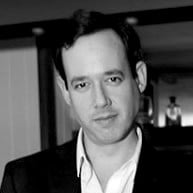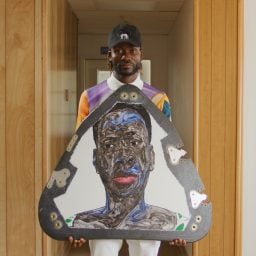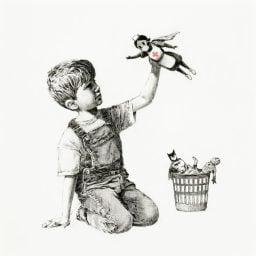A version of this story first appeared in the fall 2020 Artnet Intelligence Report, which you can download in full for free here.
One of the hottest invitations at Art Basel Miami Beach in December was to a star-studded dinner at the chic Faena Hotel honoring artist Amoako Boafo. A few years earlier, Boafo was in Accra, Ghana, struggling to sell works for $100 apiece to support his mother and grandmother. Now, he was the headliner of the art world’s buzziest week of the year, with a suite of gigantic paintings at the Rubell Museum and a sold-out booth at the fair.
“Almost anywhere that I walk, I don’t manage to look at anything because people want to talk and give congratulations,” Boafo told Page Six, which lavished the dinner with breathless coverage. When the guest of honor arrived—two hours late—he was decked out in designer duds and surrounded by an entourage of friends, influencers, and hangers-on.
Alongside celebrity attendees like Paris Hilton, Joan Smalls, and Karolina Kurkova were a number of less flashy figures who made the moment possible—and who had little in common except a shared goal: to make Amoako Boafo the artist of the moment.
There was his dealer, Bennett Roberts, who has a gallery in Los Angeles and represents the artist along with Mariane Ibrahim in Chicago. There was his Vienna-based manager, Amir Shariat, a suave operator who has described himself as the David Falk to Boafo’s Michael Jordan.
There was collector Jeremy Larner, a television producer turned private dealer who had agreed to buy a slate of works directly from the artist. And there was Josh Baer, the writer and advisor who helped broker introductions between Boafo and some of the most powerful members of the contemporary art machine.
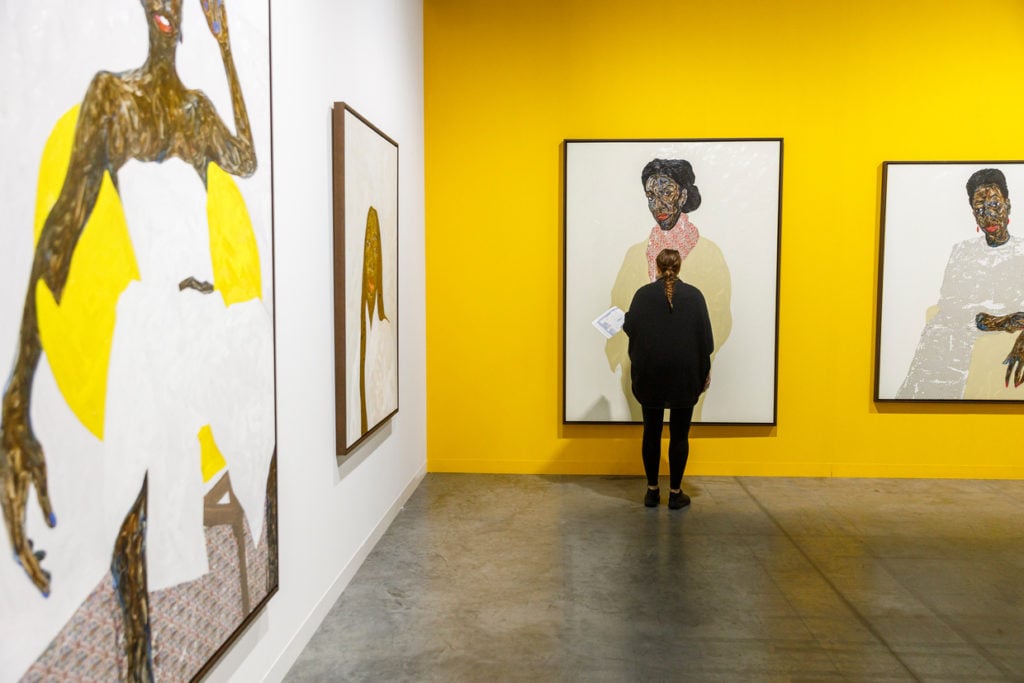
Mariane Ibrahim Gallery’s presentation of Amoako Boafo at Art Basel Miami Beach 2019. Photo: courtesy of Art Basel Miami Beach.
In the following months, the groundwork laid by Team Amoako generated global hosannas and astronomical prices. One portrait sold at auction for an astonishing £675,000 ($880,971)—more than 13 times its high estimate. As Boafo went from unknown to red-hot market star in a little over a year, he watched the players elbow one another for primacy—and the flippers begin to flood the secondary market with his work.
The rise of Boafo comes at a combustible moment: At long last, many buyers have come to realize that their collections are overwhelmingly (and ahistorically) white. But where some see a movement toward a fuller story of art, others see a financial opportunity. Certain buyers may have sensed that, against the backdrop of today’s conversations about representation, a Ghanaian artist’s eye-friendly, vivid portraits of Black figures were likely to increase in value—perhaps in short order. And then there are those who are simply doing business in the art world’s time-honored, if opaque, way. Their espousal of African artists is likely to be as genuine as their ability, and apparent compulsion, to turn a profit.
“There must be a flippers’ committee, because they all say the same thing: ‘The virus slowed my business’ or ‘I don’t like it anymore,’” Bennett Roberts, who runs Roberts Projects with his wife, Julie, said. Of some of the flippers, he added, “It’s all of these wealthy white collectors who are making huge money off of African artists during Black Lives Matter. These people must not care about Black lives at all.”
It’s a distressing turn for a young artist. As Boafo put it on the phone from Accra, “I don’t know exactly what I have to do to stop them from selling works at auction.” Over the past 12 months, he’s had a crash course in behind-the-scenes art market machinations—and now, he’s determined to to take control of his market himself.
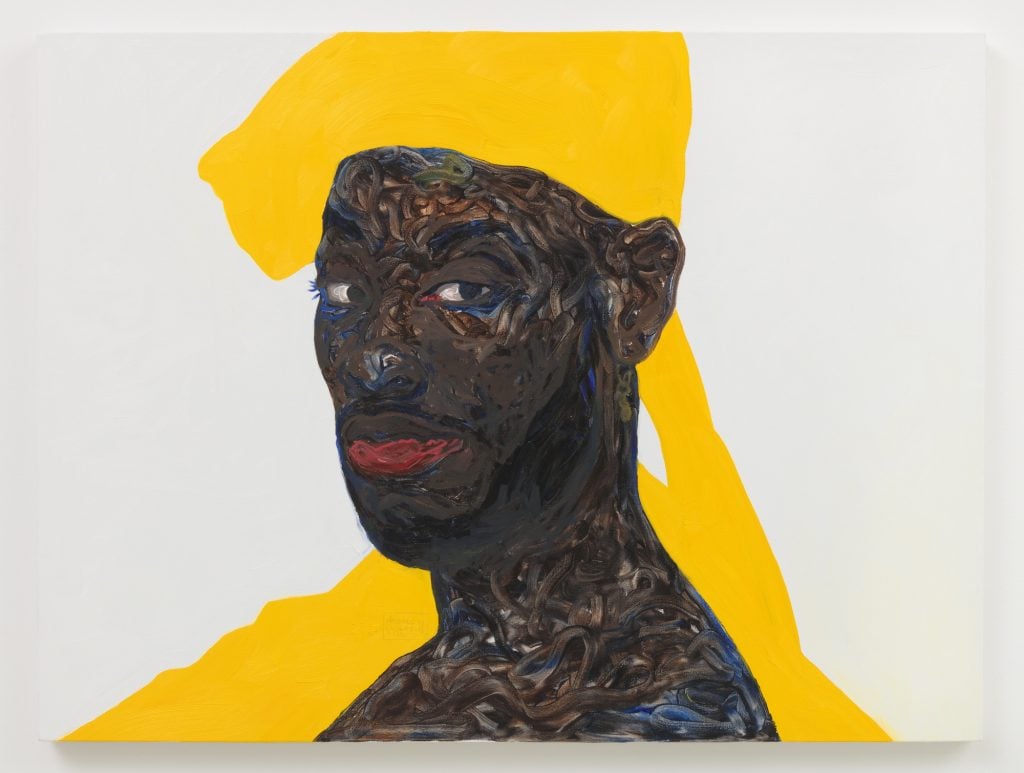
Amoako Boafo, Seye (2019). Courtesy of the artist and Roberts Projects, Los Angeles, California. Photo: Robert Wedemeyer.
In the Beginning
Boafo was born in Accra in 1984 and lost his father at a young age. While his mother worked as a cook, Boafo stayed home and taught himself to paint. He never intended to be an artist. It wasn’t an option.
“It’s something that I wanted to do from the beginning, but in Ghana, we don’t have the arts infrastructure,” Boafo said. “You have to find those things yourself.”
After a few years of supporting himself as a semipro lawn tennis player, Boafo got the chance to go to art school when an older man his mother worked for offered to pay his tuition. He graduated from Accra’s Ghanatta College of Art and Design in 2008, taking home the Best Portrait Painter of the Year award. In 2014, he moved to Vienna with Sunanda Mesquita, the Austrian artist who is now his wife.
Struggling to find his footing in Austria, he began painting portraits of Black figures he met in the city’s cultural demimonde, with twisted torsos indebted to Vienna Secessionists like Egon Schiele. His breakthrough came when he decided to ditch brushes in favor of using his paint-dipped fingers to render his subjects’ faces, creating a striking textural contrast. It did not take long for the city’s cognoscenti to take notice, awarding him the 2017 Walter Koschatzky Art Award for an artist under 35.
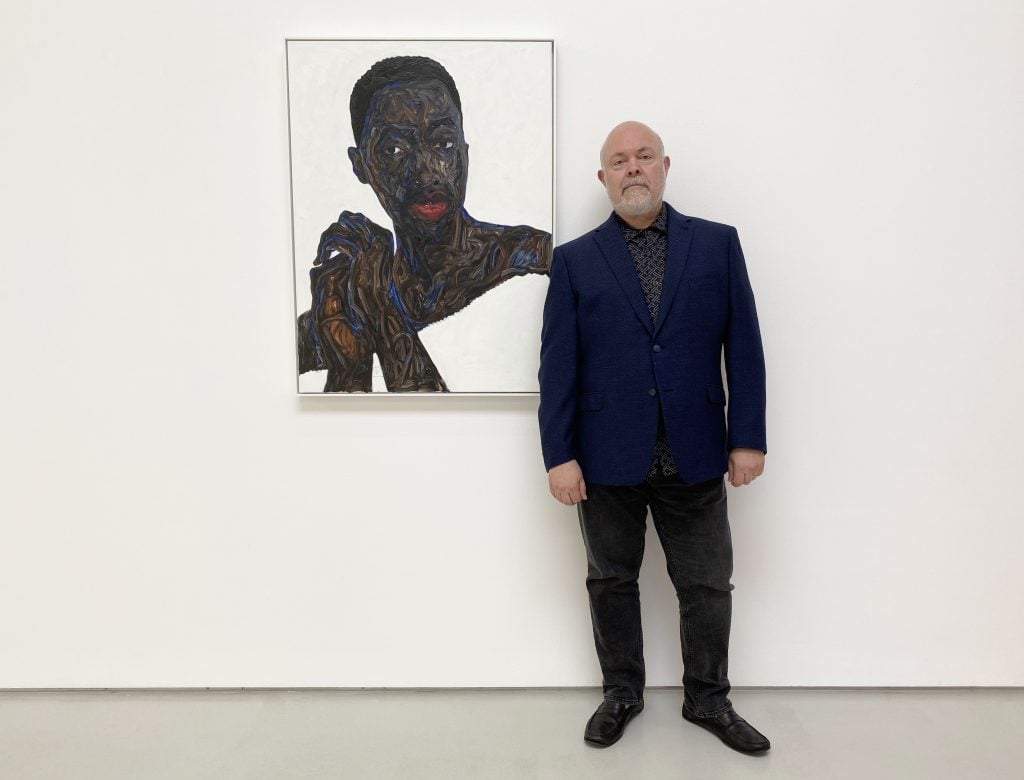
Bennett Roberts with Amoako Boafo’s Nuerki (2019). Courtesy of Roberts Projects, Los Angeles.
Still, Boafo was firmly outside the global art-market network in the spring of 2018 when artist Kehinde Wiley, fresh off unveiling his portrait of President Barack Obama, discovered Boafo’s Instagram page. A longtime supporter of emerging artists from Sub-Saharan Africa, Wiley reached out to buy a work, and promptly sent an email to his four galleries—Stephen Friedman, in London; Templon, in Paris; Sean Kelly, in New York; and Roberts Projects, in Los Angeles—tipping them off to what he thought was a real find.
“He said, ‘This is an artist that I’m buying myself, I think he is one of the great new figurative artists,’” Roberts recounted. “I was the only one who moved.”
Within weeks, Roberts offered Boafo a small exhibition. When a larger show fell through two months out, he rolled the dice and offered the unknown Ghanaian a debut in the gallery’s main space. At the time, Roberts had never seen one of Boafo’s paintings in person, but he told the artist to send over his best work.
“When I opened the first one, I was blown away. We just unrolled painting after painting on the floor of the gallery, and we realized it was more than good,” Roberts said. “It was magical.”
Roberts priced the works at $10,000 apiece before discounts. The show sold out by the second day.
For Boafo, the enthusiastic response provided a shot of confidence—but it was also a harbinger of the pressure to come. With “a much bigger audience,” he said, came “the stress—and I didn’t know the stress until things started going to auction.”
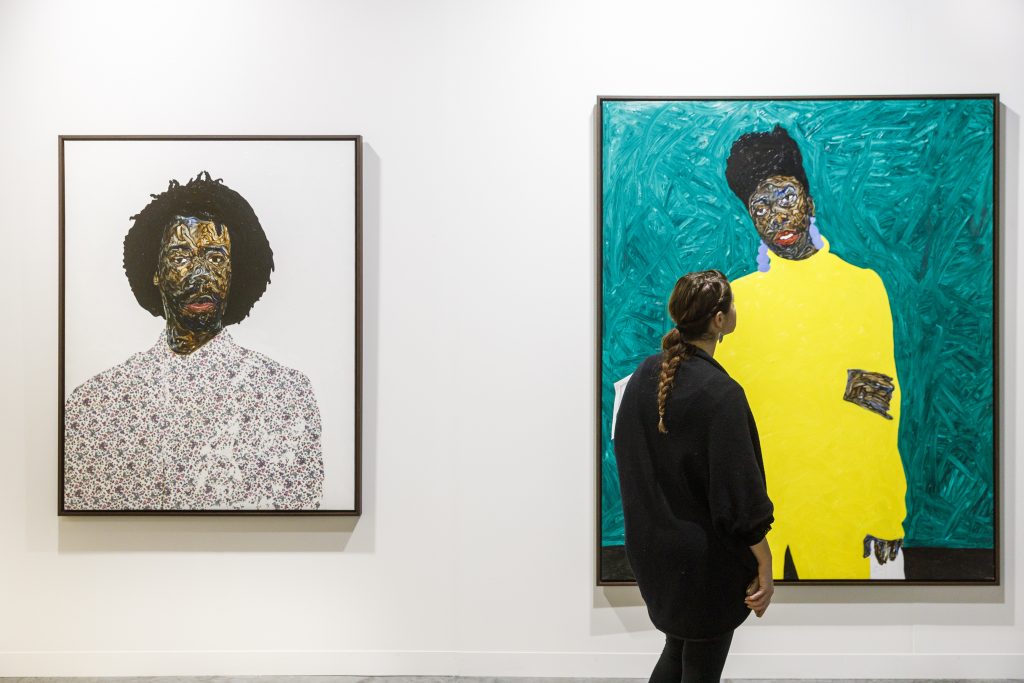
Mariane Ibrahim’s booth at Art Basel Miami Beach Nova 2019. © Art Basel
The Buzz Rises
In February 2019, Roberts Projects brought a few Boafos to the first edition of Frieze Los Angeles, where there was already a buzz around the artist’s distinctive finger-sculpted faces. It was during that fair that Larner—who founded the private dealership JKL Worldwide after his first act as a Hollywood hip-hop manager and television producer— encountered Boafo’s work at a party at the home of the former NFL star Keith Rivers, a longtime collector of emerging artists. On a tour of the house that evening, Larner recounted, Rivers “took [a painting] down from the wall and read the signature: ah-mo-AH-ko bo-WAH-fo.”
Most of Larner’s business had previously come from commissions on seven-figure trades of blue-chip artworks, but he saw a different kind of opportunity with this young artist, whose paintings captivated him. When the London-based dealer Kwaku Boateng offered Larner a half-dozen Boafo works on paper in April 2019, priced at around €10,000 ($12,000) each, he jumped at the chance.
One of the six, a portrait of Studio Museum director Thelma Golden, wasn’t actually available. Boafo had promised it to another collector, and Boateng connected Larner and Boafo on email to work it out. Before long, Larner and Boafo were bouncing ideas off each other and started up something of a friendship.
Boafo told Larner how “he used to dive into trash cans to get food, and that’s how he put himself through school,” the dealer recalled. “I was really taken aback by him.”
In May 2019, Larner proposed a deal to buy a slate of new works directly from the artist. “If I went to the galleries, I would have never gotten them,” he said, citing the waiting list full of decorated collectors.
According to Larner’s recollection of the deal, he agreed to buy 10 forthcoming large works for $25,000 each, which Boafo would not have to split with his dealers. When Boafo made portraits, he would offer them to Larner (ideally before his galleries, though the precise nature of the agreement on this point is unclear). If Larner liked one, he would wire over the $25,000. (Boafo said he was unable to comment on the specifics of the arrangement.)
“He was relatively unknown to the art world. It was still a big risk on my side, spending a quarter of a million dollars,” Larner said. “And yeah, of course, I thought that it would go up in price, but it was more about, ‘Let me support this guy, this is a cool thing.’” As Larner saw it, they agreed that he would work with Boafo as an informal manager of sorts, helping him navigate the topsy-turvy global art circuit.
Boafo needed a Virgil to lead him through the art-world inferno. Demand for work by Black artists—especially those who make figurative paintings, like Njideka Akunyili Crosby, Lynette Yiadom-Boakye, Henry Taylor, and Tschabalala Self—has skyrocketed over the past three years. Some pictures have fetched as much as seven figures at auction within 24 months of leaving the studio. This puts the artists under an uncomfortable spotlight: They feel pressure to create more of the same to satisfy demand, while scholars who could help them achieve a lasting legacy may be put off by the commercialization of the work.
Even if Boafo was blissfully unaware of these looming forces, some in the art world were already betting that his familiar but singular contribution to the genre would attract immediate attention.
As Ibrahim put it, “All of this, it’s a very cruel baptism.”
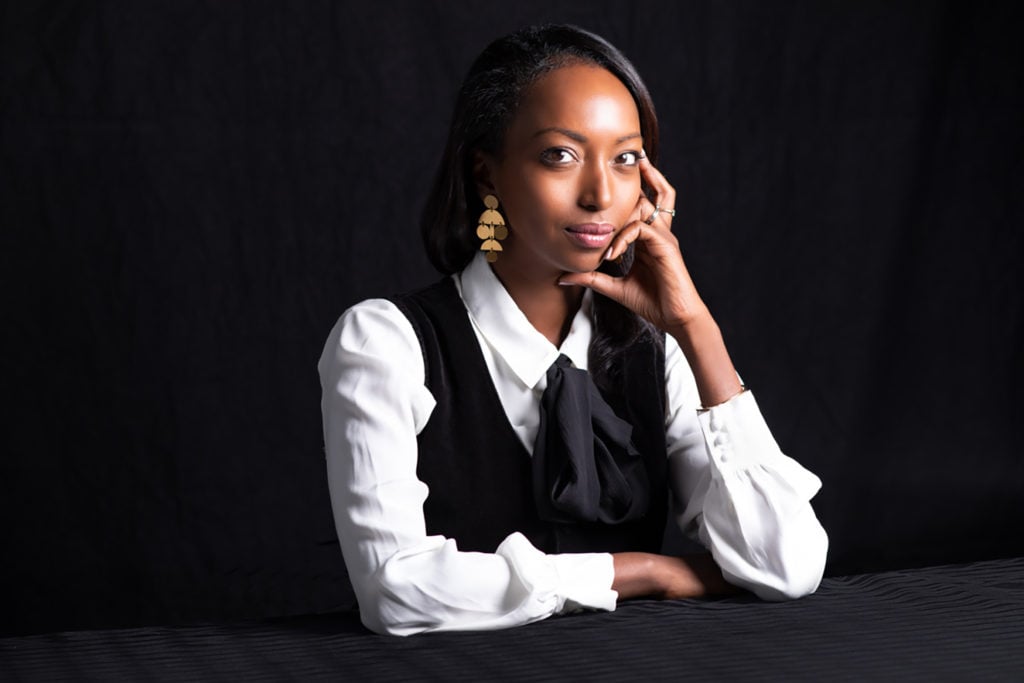
Mariane Ibrahim. Photography by Philip Newton. Courtesy of Mariane Ibrahim Gallery.
A Fortuitous Meeting
In Vienna during the summer of 2019, word of the Amoako Boafo phenomenon reached the ears of Shariat, a dapper former Deutsche Bank investment banker turned private dealer and artist manager. He cold-emailed Boafo for a studio visit. When Shariat arrived, he was blown away by what was hiding in plain sight in his own city.
“I was like, ‘How can a guy like that be painting under my nose!’” Shariat said. “We see paintings all day long—but really iconic works? Almost never.”
Shariat FaceTimed the collectors Don and Mera Rubell right then and there. The couple took the ensuing virtual studio visit in their PJs—and recounted with delight that they had already purchased two Boafos after encountering the artist’s work at tastemaking dealer Jeffrey Deitch’s Los Angeles gallery.
(Roberts consigned five Boafos to the Deitch show, curated by artist Nina Chanel Abney, which sold to trustees of the Museum of Modern Art and the Los Angeles County Museum of Art, as well as to the notorious wheeler-dealer Stefan Simchowitz. The Rubells bought theirs directly from Roberts.)
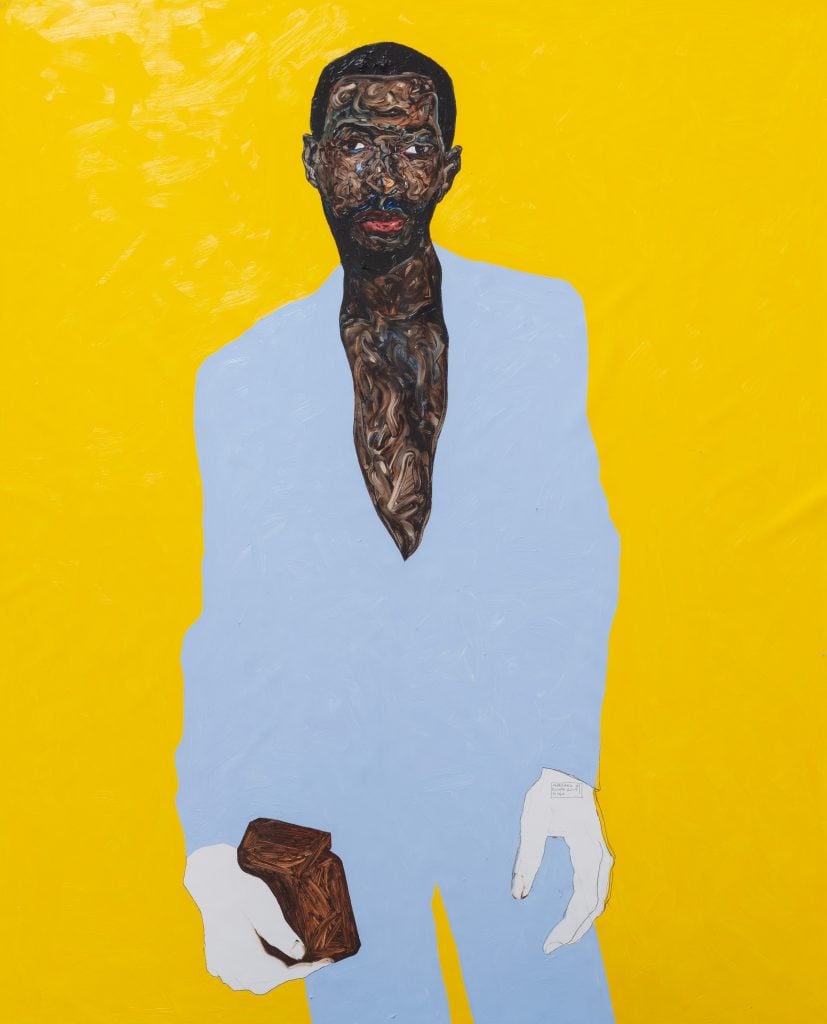
Artworks Amoako created as part of his residence at the Rubell Museum in 2019. Courtesy of the Rubell Museum.
Sensing an opportunity, Shariat proposed Boafo as the next artist-in-residence at the Rubell Family Collection, a platform that had vaulted such eventual superstars as Sterling Ruby and Oscar Murillo to art-world fame.
By the end of the summer, a number of people were jockeying for seats on the Boafo rocketship. The contenders each felt they had a special relationship with the artist and were instrumental to his success. Larner claimed he was the one who suggested the residency to Shariat, an idea he said he dreamed up while listening to Afropop music at his house in Hawaii last summer. Roberts contends that he “set the whole thing up” himself. (Boafo said it was Larner who pushed Shariat to visit his studio and tee up the residency, although Roberts introduced him to the Rubells.)
The prospect of the residency created tension in the Boafo-verse. Those involved in the discussions say his dealers initially feared the opportunity would put him on an impossible-to-stop fast track that might jeopardize a sustainable career. Boafo, for his part, was just trying to keep up. “I didn’t have any idea—I didn’t know who the Rubells were until I did the show at Jeffrey Deitch,” Boafo said.
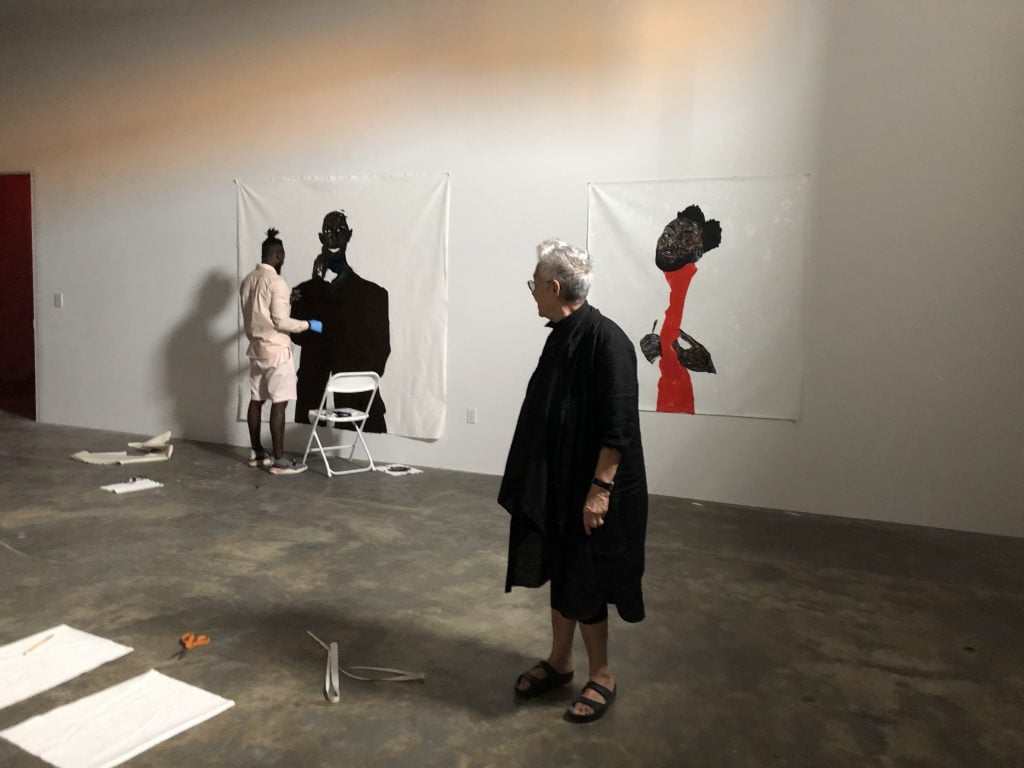
Amoako Boafo and Mera Rubell during Boafo’s artist residence at the Rubell Museum 2019. Photo courtesy of Rubell Museum.
After weeks of discussions, his dealers came around, and Boafo decided to do the residency. Ibrahim—a French-Somali art consultant turned gallerist who first encountered Boafo’s work on Instagram back in 2018 and is perhaps America’s most prominent dealer of emerging African contemporary art—got to work on a solo booth dedicated to the artist at Art Basel Miami Beach. It would mark a debut for both of them at the world’s flashiest art fair.
A Potentially Game-Changing Deal
Around the time Boafo headed down to Miami for his residency, Larner enlisted Baer, a veteran art advisor who also pens the industry newsletter the Baer Faxt, to broker introductions to influential players on behalf of the artist in New York. Larner was acting as an informal advisor and friend but admitted he was also “thinking about my 10 paintings and making them worth more.” Only two of the 10 had been purchased and delivered by the fall of 2019.
One afternoon, Baer ran into one of the most powerful collectors in the world, David Mugrabi, in the elevator at Lever House, on Park Avenue. Baer asked Mugrabi if it was true that the Mugrabi family had been quietly collecting Boafo.
Yes, Mugrabi said, according to those familiar with the conversation. And they wanted more. (Mugrabi did not return repeated requests for comment on this story.)
Over the course of meetings in Vienna, London, and New York, the Mugrabis and Boafo conceived a show for which the artist would whip up 50 40-by-40-inch portraits, à la Andy Warhol’s society portraits, of Africans and Black Americans. The works would be installed at Casa Lever, the swank restaurant inside Lever House. Larner and the Mugrabi family would each own 25 paintings, jointly paying Boafo a total of $1 million. (Larner pointed out this was “more than retail.”)
Boafo’s galleries opposed an agreement that would leave so much work in the hands of potential traders. “I think it was another huge manipulation—a way to get a bunch of works to own so they can make more money,” speculated Roberts. “The Mugrabis brought another one of those Mephistophelean deals to the table, and those deals are disgusting,” he seethed.
In the end, Boafo declined to sign the million-dollar contract. Looking back, he called it “the best decision I made. Twenty paintings with one person? They’d be controlling everything right now.”
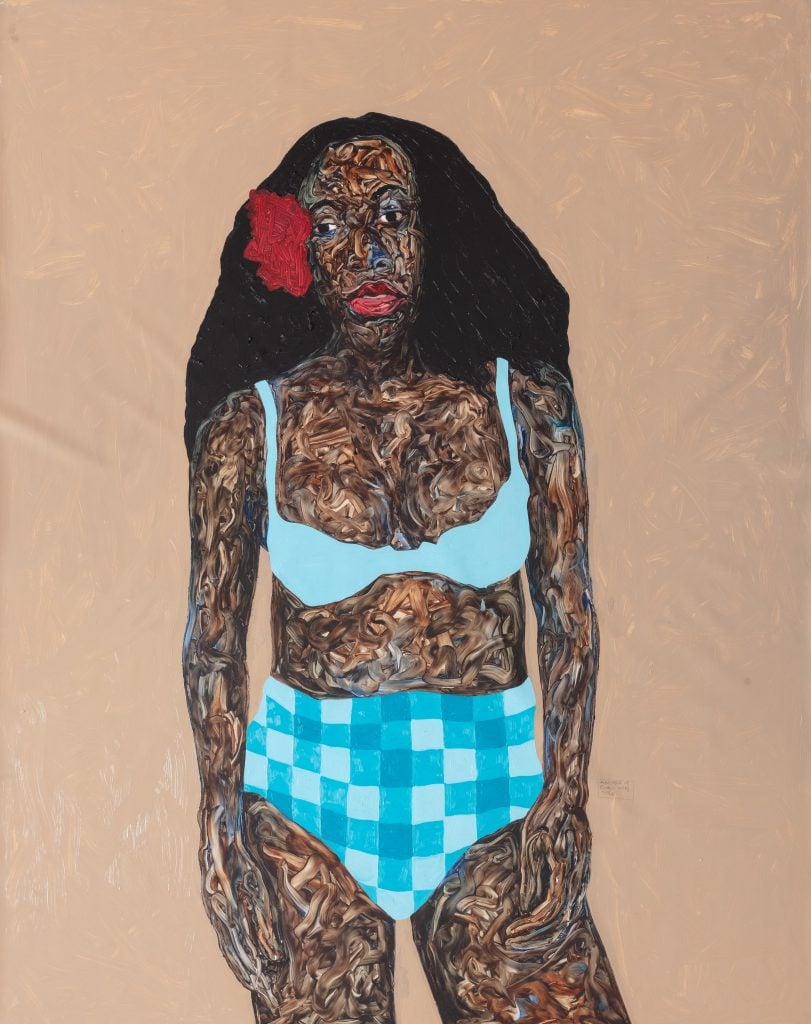
Amoako Boafo, A Red Rose (2019). Courtesy of the artist and the Rubell Museum.
For Larner, the dissolution of the deal was a setback that hinted at Boafo’s wavering loyalties. “Amoako’s a polygamist—it was always ‘Yes, yes, yes, yes, yes,’ regardless of his true intentions,” Larner opined. “It was a big egg on Josh’s f*cking face. Our feelings were f*cking crushed.”
A Star Is Born
By the time Art Basel Miami Beach rolled around, Boafo was everywhere. He was mobbed at the Rubell Museum opening, and his work at the fair sold out in minutes. Already, auction-house specialists were begging collectors up and down Collins Avenue for a primo example to put in a future sale, asking for a dollar threshold that would pry the canvases off their walls.
In early 2020, word got out that a knockout Boafo would be included in Phillips’s February contemporary art evening sale in London. It was The Lemon Bathing Suit, which Roberts had consigned to Deitch, who then sold it to Simchowitz. The collector owned it for a matter of months before putting it on the market.
“Simchowitz promised Deitch that it was for his own collection—he begged him and begged him for it,” Roberts fumed. “But Stefan is kind of a sociopath—he’s not the only one, but he’s the head of the snake. When he leaves, it’s like you’ve been talked to by Charlie Manson.”
(Following publication, Roberts walked back his statement: “I issue a full retraction. I am not a professional sociologist, psychotherapist, criminologist, or herpetologist; I am not schooled in these disciplines and I sincerely apologize to Mr. Simchowitz for my lack of propriety.”)
Simchowitz, for his part, insisted he bought the work with good intentions. “What can I say?” he said. “Most galleries like a bit of the old beg and grovel.”
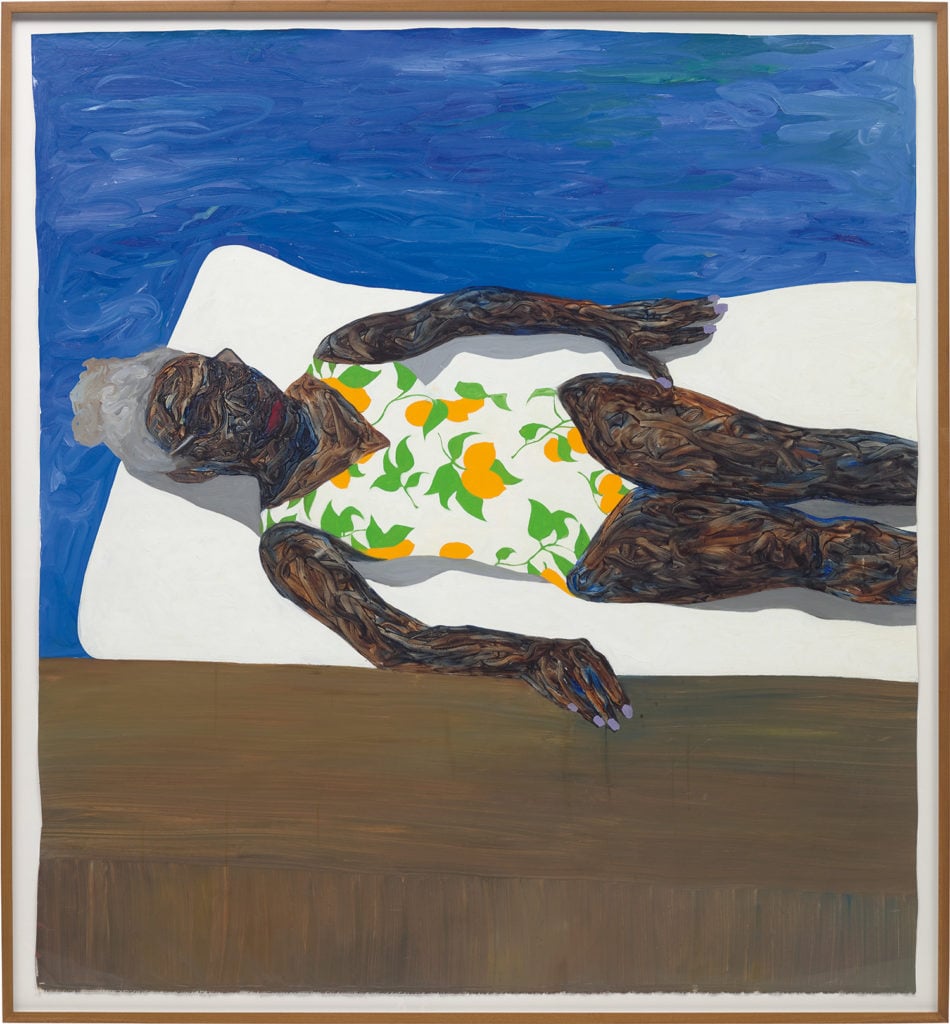
Amoako Boafo’s The Lemon Bathing Suit (2019). Courtesy of Phillips.
Estimated at around $40,000 to $65,000, the painting of a woman in a fruit-patterned maillot was slated first in the sale, a spot reserved for the lot with the most feverish interest. But even the advance buzz didn’t prepare anyone for what happened: after a fierce bidding war, The Lemon Bathing Suit sold for $880,971. Simchowitz had paid $22,500 for the work (he got a 10 percent discount on the full price), which meant the sale generated a tidy 3,815 percent return.
Halfway around the world, at Frieze Los Angeles, the price was all anyone could talk about. Who could possibly have paid that sum for a work by an artist so new to the scene?
The buyer of The Lemon Bathing Suit, sources said, was a mysterious London-based collector named Ari Rothstein, a 29-year-old real-estate executive. According to financial documents, he founded a holding company with Raphael Held, a 30-year-old with a similarly blank Google presence, in 2018.
Boafo confirmed that Rothstein was the buyer. He knew because Rothstein was bidding on behalf of a client. And the client was Amoako Boafo.
The Truth About the Bathing Suit
When word got out that Simchowitz was flipping the painting, Boafo had decided to take control of his own market and buy it himself.
There was just one problem: Boafo knew the picture was likely to exceed its $65,000 high estimate and didn’t have that kind of cash on hand. Enter Ari Rothstein and Raphael Held, high performing under-the-radar art market players who came highly recommended to Shariat by an art advisor he trusted. Boafo hung out with the duo during the Miami Beach party miasma and got on with them fine. Most importantly, Rothstein and Held had the money he needed.
As Boafo recalled it, they hatched a plan. Rothstein and Held would use their own funds to buy The Lemon Bathing Suit on Boafo’s behalf—and in return Boafo would give them up to $480,000 worth of art. (The valuation was based on what his works were fetching privately on the secondary market.)
It seemed like a great deal for the British duo: Boafo expected the painting to fetch, at most, $300,000. The artist said he asked Shariat, who led the negotiations, to confirm that if the bidding went above $480,000, he would be under no obligation to deliver more than that amount of work to the buyers. It is unclear whether the deal was accompanied by a formal contract, but Boafo said he “thought it was solid.” (Rothstein, Shariat, and Held did not reply to detailed questions. None of the players has suggested there was any legal wrongdoing or exploitation; deals in the art world are as often verbal as they are enshrined in legalese.)
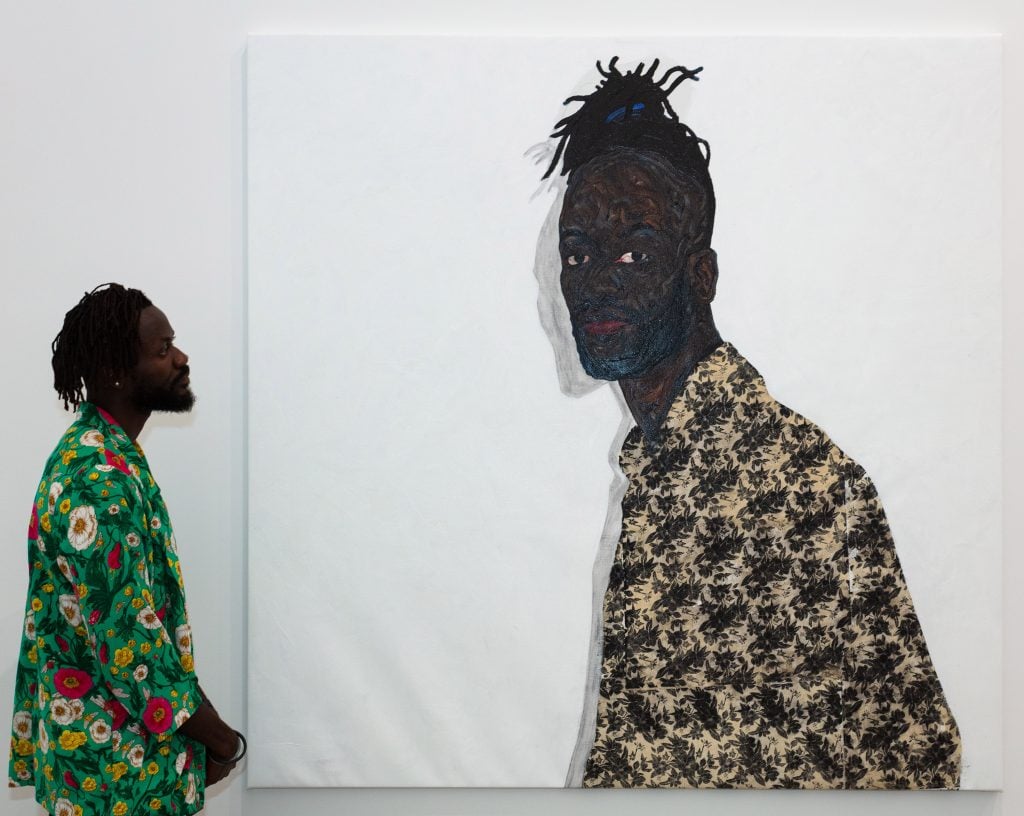
Amoako Boafo working during his residence at the Rubell Museum in 2019
Photo: Chi Lam.
Things quickly went off the rails. “I woke up the next day and the painting had sold for $900,000,” Boafo said, rounding up the number, “and I was like, ‘Guys, I’m not gonna give you paintings worth $900,000.’”
After discussions, the artist recounted, he gave them one large and two medium-size paintings and a work on paper worth a combined $480,000. There was one caveat: If Rothstein and Held flipped the works and made a profit, Boafo said, they’d have to give 20 percent of the upside back to the artist and an additional 10 percent to Shariat. (Shariat denied that the initial agreement stated he would receive a 10 percent cut.)
Spoiler alert—the duo flipped them and made a profit. The three works hit the block in as many months: Self Portrait (2019) sold at Sotheby’s online in May; Untitled (2019) at a Sotheby’s day sale on June 30; and Untitled (2019) at Phillips on July 15. They fetched a total of $644,500. Twenty percent of the profit would come out to $32,900.
But almost a month after the final sale, Boafo alleged, “I haven’t received anything yet.”
In response to detailed questions about these events, Rothstein and Held declined to discuss “private and confidential business dealings.” In a statement, they said, “We have acted with professionalism and integrity throughout our long careers, and have adhered to all regulations, industry practices, and relevant laws. We have fulfilled all contractual and financial obligations with numerous parties. Many of the claims made against us are unfounded and untrue. We therefore do not intend to comment further on these unsubstantiated claims, and have instructed our lawyers to deal with these matters accordingly.”
“I Don’t Think I Want to Buy It Back”
The artist also hasn’t gotten his hands on The Lemon Bathing Suit. Soon after buying the work, Rothstein and Held put it back on the market privately for $300,000—an attempt, Boafo surmised, to make up the difference between what they paid and the $480,000 worth of art the painter had sent them. (Such a fast turnaround, even in the complex world where art and high finance collide, is unusual.) Multiple sources said they saw PDFs that spelled out the sales offer, and eventually the duo sold it for more than $300,000.
That sum, plus the $644,500 they reaped from flipping the three works from Boafo, brought their windfall to almost $1 million—significantly more than what they paid for The Lemon Bathing Suit. Rothstein and Held’s statement denying any impropriety also applies to these alleged transactions.
Boafo said the downstream buyer of The Lemon Bathing Suit offered to sell the cherished painting back to its artist for $600,000, but at this point, he feels there’s a stain on the whole thing. “It’s been through so many people that I don’t think I want to buy it back,” Boafo said.
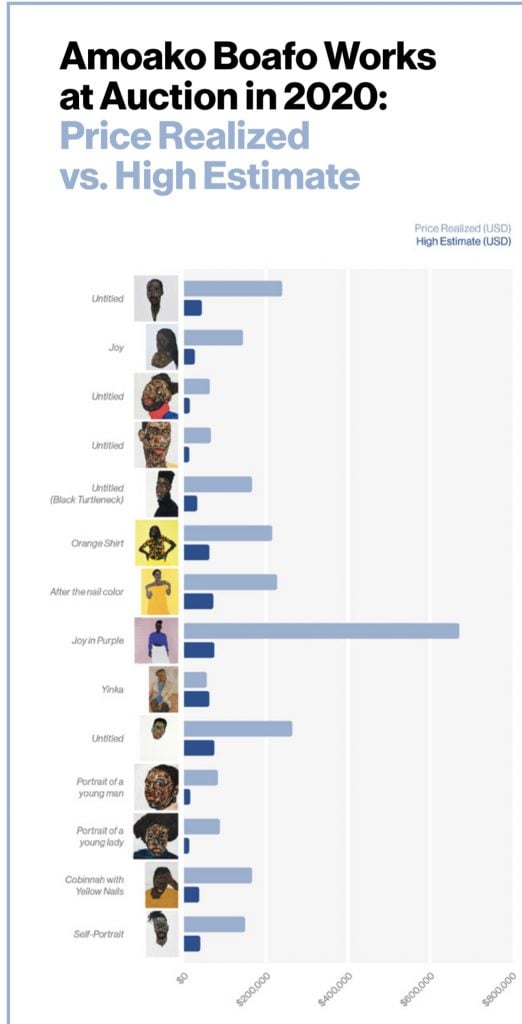
Copyright Artnet Price Database 2020.
He considered getting lawyers involved but has backed off for now. Held and Rothstein did not do anything illegal, and the agreement with the duo came about through conversation with Shariat—it was all built on trust. The intricacies of such deals may seem obscure to the layman, but they are emblematic of a certain high-stakes slice of the art trade—and although they fall apart almost as often as they come together, they are accepted as part of the game.
Boafo was left feeling uneasy, but still has some trust in Shariat. Although the artist says he did a “bad job” with the Rothstein deal, Shariat continues to act as his advisor as several mega-gallery suitors vie to sign him. The Lemon Bathing Suit incident was one of several that starkly illuminates how today’s art market can leave young Black artists fighting to regain control over their work—and their future—at a moment when the art world claims to be reassessing the power dynamics among collectors, institutions, and artists of color.
Let the Flipping Begin
After Rothstein and Held’s expectation-busting gambit, it did not take long for more flippers to come out of the woodwork. Many of the early buyers, people familiar with the market said, were more like casual art enthusiasts than like billionaires with their own private museums—which meant that, as prices shot up, it became difficult for them to look at their Boafos and see anything other than giant bags of money.
“Say you have a net worth of $1 million or $2 million and you’re buying work for $5,000, and all of a sudden, it’s worth a quarter of a million,” Larner said of “low-level” purchasers. “If you sell, your net worth goes up by 40 percent.”
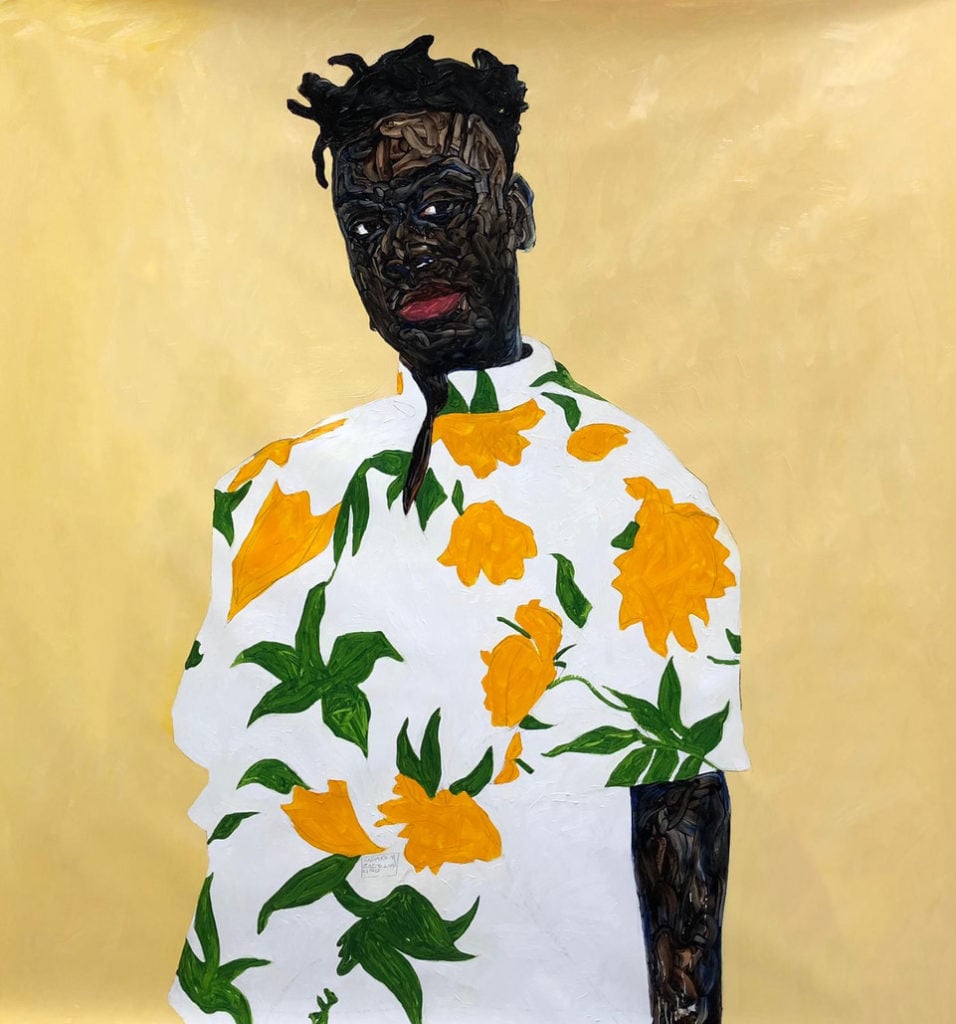
Amoako Boafo, Sunflower Shirt (2019). Courtesy of Marian Ibrahim Gallery.
Despite an auction season kneecapped by the lockdown, Boafos have come to auction often this year—22 times since The Lemon Bathing Suit. Of the 23 works offered, 13 sold for prices exceeding $80,000, with six passing $200,000—a remarkable run for an artist new to auction and downright miraculous considering the state of the economy. Several dozen more have traded hands privately over the past few months, sources said, with prices exceeding $200,000.
And there are plenty more Boafo works still out there: sources estimated that Roberts and Ibrahim sold more than 100 on the primary market, and Boafo sold another 50 or 60 out of his studio and via Instagram.
One early buyer was Benjamin Ikwueme, a young collector of African art based in London. He reached out to Boafo, telling him he loved his work but was too broke to buy anything, the artist recalled. That actually made Boafo like him more.
“When someone says they don’t have money but they appreciate the paintings, I tend to connect with them, because I don’t believe art should only be for the rich,” Boafo said. “So I made him some small drawings for a Christmas present.”
He charged Ikwueme €100 ($120) for each 13-by-13-inch work, a steep discount even back in 2018. After Ikwueme paid €1,000 ($1,200) up front for the 10 small paintings, Boafo delivered six and then offered up a larger work—Lady With Lemon Top—in lieu of the rest. “I said, ‘Now we’re more like brothers, so I would give him a painting instead,’” Boafo recounted.
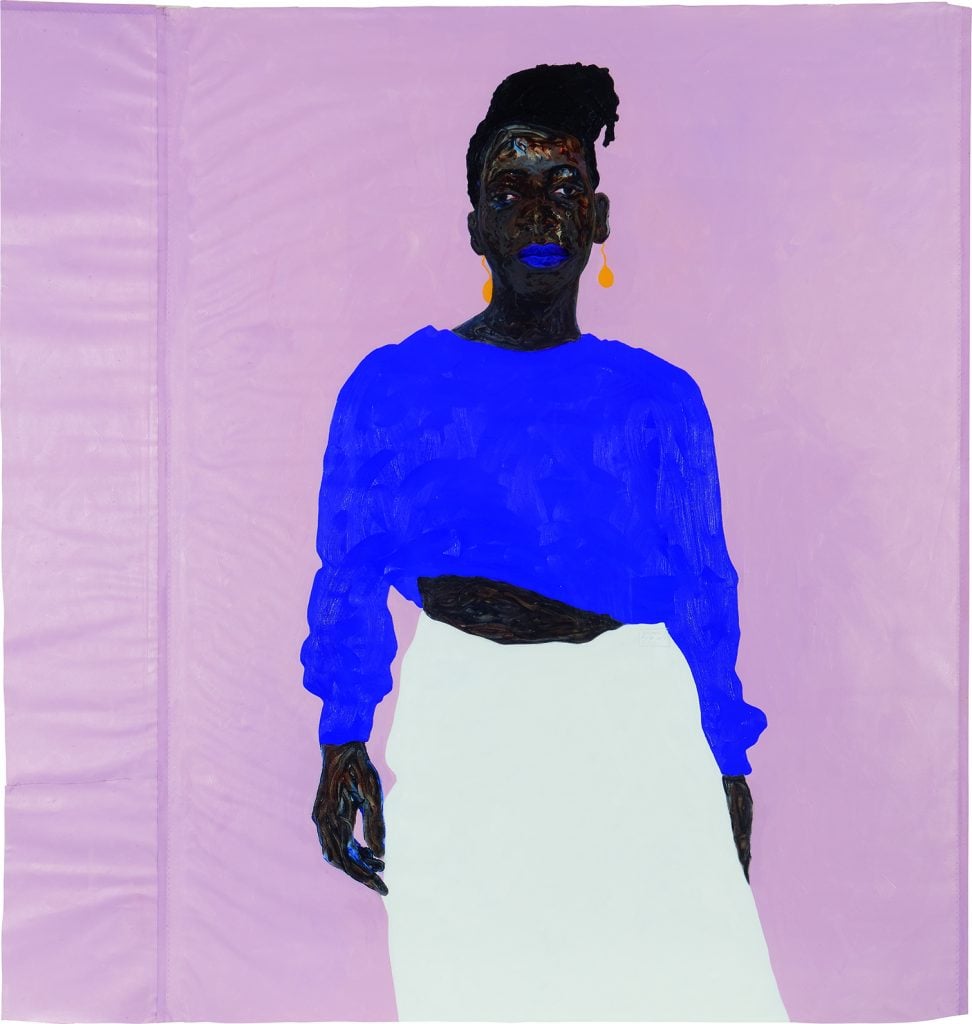
Amoako Boafo, Joy in Purple (2019). Courtesy of Phillips.
Two years later, Boafo was dismayed to see those same seven works pop up at auction. Two of the portraits sold at Bonhams in June for a combined $167,500. Later in the summer, another two fetched $114,000. All told, the swap of a lifetime netted Ikwueme $696,000 on his initial investment, a return of almost 58,000 percent.
“I said, ‘Benjamin, you lied to me, you told me you had €100, but it turns out you just wanted to sell them.’ I said, ‘Fuck off, why did you put these paintings at auction?’”
Reached for comment, Ikwueme said that Boafo agreed to the prices and that there were no restrictions attached to the works, some of which he had gifted to family and friends.
The seller of the second-priciest Boafo, meanwhile, is a familiar figure. Ari Rothstein, according to sources including Boafo, raked in a whopping $668,000 for Joy in Purple at Phillips in July, more than nine times its $70,000 high estimate. Sources said Rothstein bought the work from a collector in a deal brokered by Sotheby’s private-sales arm and then consigned it to Phillips. Rothstein, Sotheby’s, and Phillips declined to comment.
Relationships Gone Sour
Larner, Boafo’s unofficial manager of sorts, said he has not consigned any work to auction, but he did sell the works on paper he purchased in April 2019 from the London dealer Kwaku Boateng. He bought them for €10,000 each and sold them for prices that ranged from $75,000 to $150,000, according to an interview he gave to Bloomberg.
Meanwhile, Baer at first claimed that he had “not traded any works by Amoako” and owned “several which are not for sale,” but a week later amended his statement to admit parting ways with one when “approached to find a Boafo on behalf of a major museum trustee.”
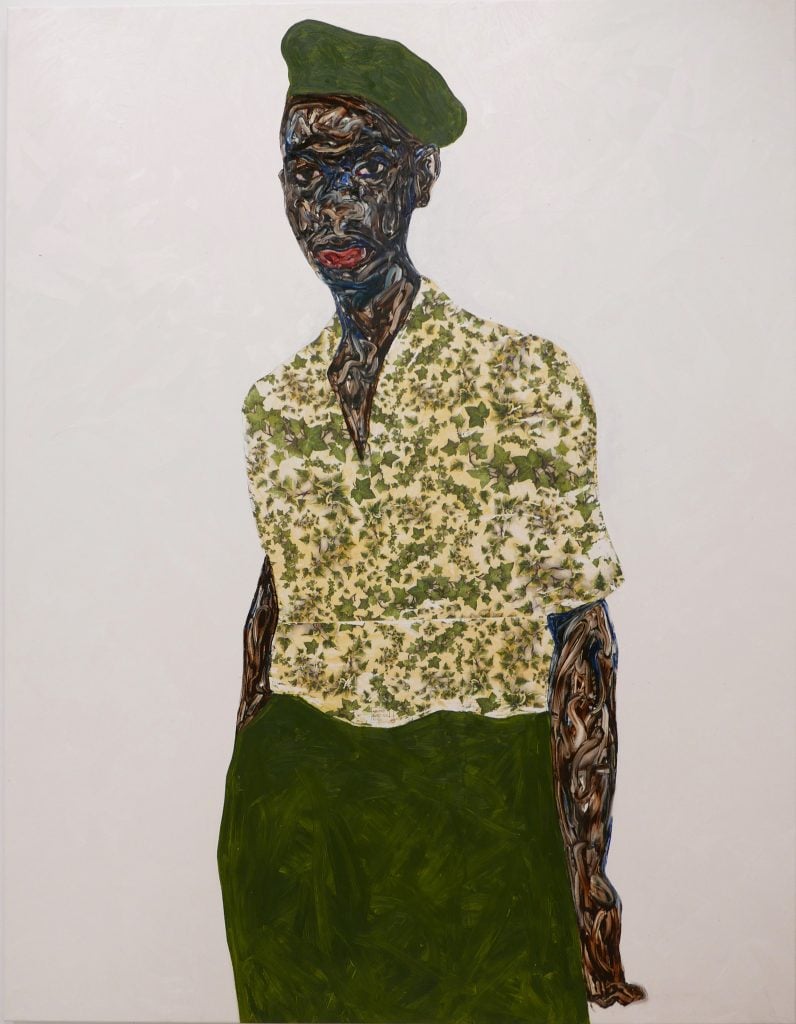
Amoako Boafo, Green Beret (2020). Courtesy of the artist and Mariane Ibrahim.
After the end of 2019, Larner and Baer stopped doing official business with Boafo—and that’s just fine with the artist’s gallerists. “The artists are right to explore relationships,” Ibrahim said, “but I think it was very fortunate for Jeremy and Josh Baer but unfortunate for Amoako.”
When asked about the duo, Roberts said that, though he had a cordial relationship with them, he felt they didn’t serve Boafo the same way a gallery did.
Larner countered that he was simply trying to help an artist whose work he loved. The gallerists, on the other hand, “were serving themselves” more than the artist, he claimed, adding that Boafo “would be in a better position [if he’d] stuck with the program” that Larner was trying to implement.
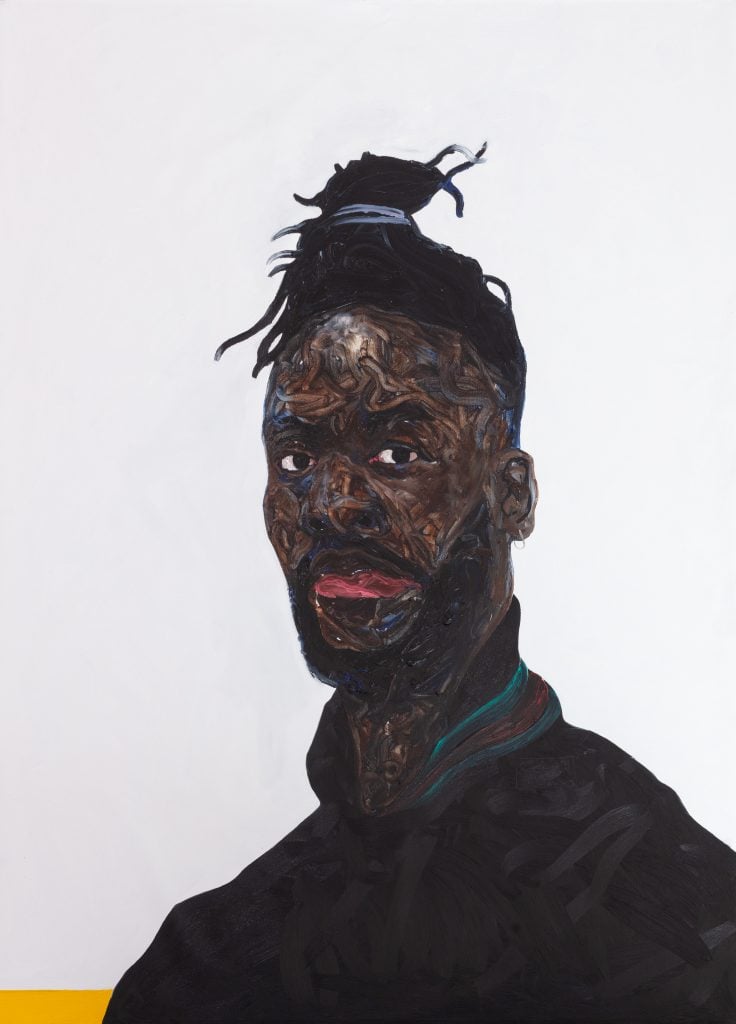
Amoako Boafo, Self in Gucci Jacket (2019). Courtesy of the artist and the Rubell Museum.
Asked about his relationship to the artist now, Larner said he still felt fondly toward him despite everything that’s happened. “I love Amoako. He was a friend who I cared about so much, it was almost like having a child. I’m really heartbroken.” (Larner was so devoted to the artist that he claimed he gave Boafo his own jacket—a Gucci worth $3,500—because it was cold in New York when the artist visited and that it is the same one that appears in the painting Self in Gucci Jacket.)
Despite the warm feelings, Larner stated in July that if he didn’t receive the remaining eight paintings he believed he was owed, he would “of course” sue. The following month, however, he and Boafo came to an understanding.
“Jeremy had his lawyer contact my lawyers,” said Boafo, “so we had lawyers upon lawyers. But we reached an agreement that is good for the both of us.”
Mega-Galleries Circling
Although he is already the avatar of auction success during the lockdown era, Boafo is poised to become even better-known globally. According to Shariat, the artist will soon sign with a mega-gallery to represent him in New York, with Roberts Projects and Ibrahim remaining on board in their respective cities. Boafo said he hasn’t made a decision yet but confirmed that he had met with Pace Gallery and Gagosian. (The galleries declined to comment.)
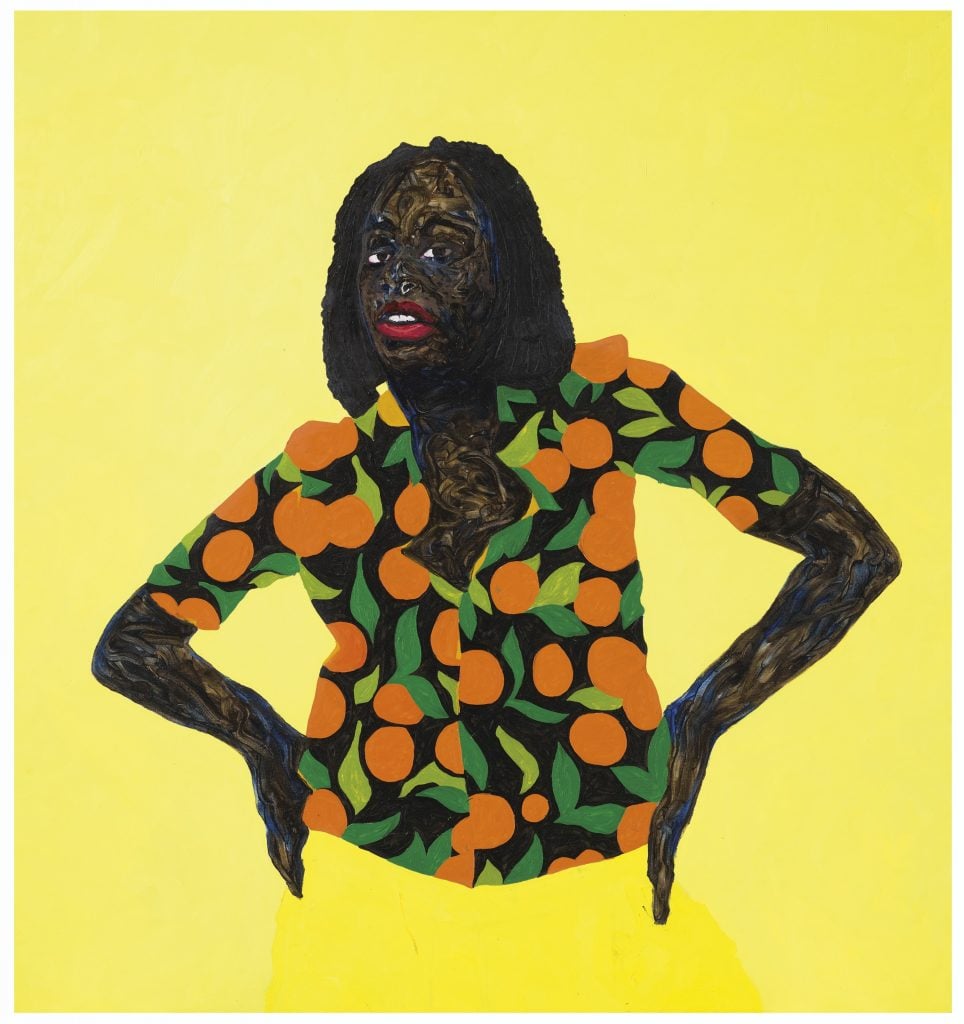
Amoako Boafo, Orange Shirt (2019). Courtesy of the artist. CHRISTIE’S IMAGES LTD. 2020
Such businesses have power to effectively shut down speculative reselling that smaller shops don’t. If you flip a work Larry Gagosian sold you, Larry Gagosian will not only never sell you a work by that artist again—he’ll never sell you a work by any of his artists.
“We want him to join a bigger gallery,” Roberts said. “I hope the New York thing is signed, and at a big powerful place, so all the shenanigans will stop.”
In addition, Shariat has lined up a number of solo museum exhibitions—so many, he said, that he has been turning other reputable institutions down. And on September 10, Ibrahim opened “I STAND BY ME,” Boafo’s first solo show at her Chicago gallery. While she wouldn’t comment on whether primary market prices have been pushed up further, she confirmed that intense demand allowed her to place many of the show’s large-scale works in museum collections, or the collections of influential museum trustees, in advance of the opening. The wave of auction sales is “not sustainable for his practice long-term,” she said. “We are dedicated to placing the works amongst responsible patrons.”
Such a rapid ascent would give any painter whiplash. Back in Accra, Boafo has been busy painting, sending out progress reports to fans on Instagram, and reaping the benefits of his increasingly elevated primary market prices. One advisor said the artist has been buying Ferraris. (Boafo clarified that it’s just one car, and a used one at that.)
Those close to the artist say he has the temperament to rise above the frenzy. “We see a ton of painters, but intuitively I knew this guy was special, and he’s shaping up to be one of these once-in-a-generation artists,” said Ghanaian-American curator Larry Ossei-Mensah, who has known Boafo since 2018. “He’s going to make art regardless of the way the market sees the work.”
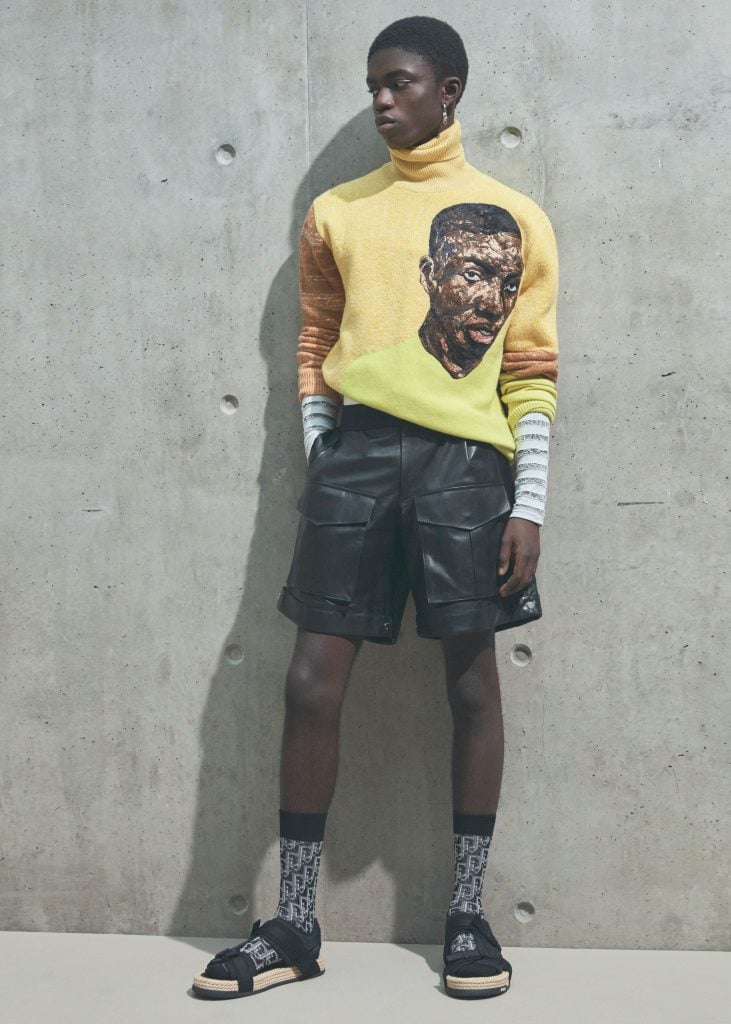
Amoako’s collaboration with Dior for Mens Summer 2021. Photo: Jackie Nickerson for Dior.
Boafo recently launched a collaboration with Dior, making him the first African artist to develop a line with the famed French fashion house. As part of the arrangement, Dior is helping to fund a sprawling new studio complex for him in Accra, which will have space for an artist-in-residence as well as a gallery run by local creatives.
As we spoke, Boafo sounded resigned rather than angry. He was disheartened that so many byzantine dealings are considered business as usual behind the scenes in the art world’s secondary market.
“When the dust gets settled, when things calm down, I want to go over all the people who think they can f*ck me over,” he said. “You can’t tell me you want the painting for yourselves and then sell it. You can’t take my painting and then put my painting to auction. They think it’s OK—because, well, that’s the game.”
Going forward, Boafo wants to make sure the people who buy his works are trustworthy. In an unregulated secondary market, where handshake deals are broken and flipping will never go away, trust in dealers and collectors is all an artist has.
“Your word is your word,” Boafo said.
A version of this story first appeared in the fall 2020 Artnet Intelligence Report. To download the full report, which includes our list of 51 art-world innovators who are changing the industry, an account of what art top collectors are buying (and why), and how auction houses have pivoted to a new standard of business, click here.



















